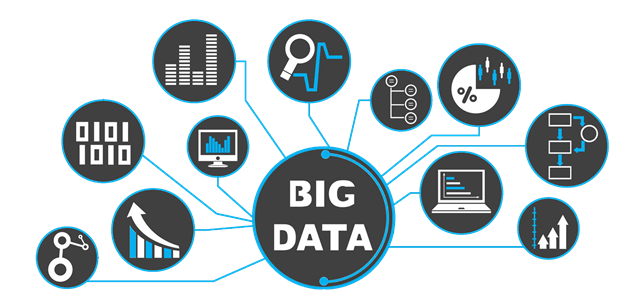As we approach 2024, the landscape of pediatric healthcare is rapidly evolving. From technological advancements to innovative treatment methodologies, the focus remains steadfast on improving the health and well-being of children. This article delves into the top trends in pediatric healthcare for 2024, providing an informative overview of the key areas shaping the future of this critical field.
Telehealth and Remote Monitoring
One of the most significant trends in pediatric healthcare for 2024 is the continued expansion of telehealth services. The COVID-19 pandemic accelerated the adoption of telemedicine, and its benefits have proven indispensable, especially in pediatric care. Telehealth allows for convenient and efficient consultations, reducing the need for in-person visits and minimizing exposure to infectious diseases.
Remote monitoring technologies are also gaining traction. Wearable devices and mobile health apps enable continuous tracking of vital signs and other health metrics, providing real-time data to healthcare providers. This trend is particularly beneficial for managing chronic conditions such as asthma, diabetes, and epilepsy in children, ensuring timely interventions and personalized care.
Personalized Medicine
Personalized medicine is another burgeoning trend in pediatric healthcare for 2024. Advances in genomics and biotechnology are paving the way for tailored treatment plans based on an individual child’s genetic makeup. This approach allows for more precise diagnoses, targeted therapies, and improved outcomes.
Pharmacogenomics, the study of how genes affect a person’s response to drugs, is a key component of personalized medicine. By understanding genetic variations, healthcare providers can prescribe medications that are more effective and have fewer side effects. This is especially crucial in pediatric care, where children often respond differently to treatments compared to adults.
Mental Health Focus
The mental health of children and adolescents is gaining increased attention in pediatric healthcare for 2024. The growing awareness of mental health issues, coupled with the impact of the pandemic on young minds, has highlighted the need for comprehensive mental health services.
Integrating mental health screenings into routine pediatric visits is becoming more common. Early identification of conditions such as anxiety, depression, and ADHD allows for timely intervention and support. Additionally, schools and communities are collaborating with healthcare providers to create holistic mental health programs, ensuring that children receive the care they need in a supportive environment.

Advancements in Pediatric Surgery
Pediatric surgery is witnessing remarkable advancements, driven by technological innovations. Minimally invasive surgical techniques, such as laparoscopy and robotic-assisted surgery, are becoming standard practice in pediatric healthcare for 2024. These techniques offer numerous benefits, including smaller incisions, reduced pain, faster recovery times, and lower risk of complications.
Furthermore, 3D printing technology is revolutionizing pediatric surgery. Custom-made surgical models and implants can be created to match the unique anatomy of each child, enhancing surgical precision and outcomes. This trend is particularly impactful in complex congenital conditions, where traditional surgical approaches may be challenging.
Immunization and Preventive Care
Immunization remains a cornerstone of pediatric healthcare, and 2024 is set to see continued efforts to improve vaccination rates and develop new vaccines. The introduction of vaccines for emerging infectious diseases and the enhancement of existing vaccines are critical to protecting children’s health.
Preventive care extends beyond immunization. Comprehensive wellness programs that include regular screenings, nutritional guidance, and physical activity promotion are essential components of pediatric healthcare. These programs aim to instill healthy habits from a young age, reducing the risk of chronic diseases and promoting overall well-being.
Artificial Intelligence and Big Data
Artificial Intelligence (AI) and Big Data are transforming pediatric healthcare by enabling more accurate diagnoses, personalized treatment plans, and efficient healthcare delivery. AI algorithms can analyze vast amounts of data from electronic health records, medical imaging, and genetic information to identify patterns and predict outcomes.
In pediatric care, AI is being used to develop predictive models for conditions such as autism, congenital heart defects, and neonatal complications. These models facilitate early detection and intervention, improving long-term health outcomes. Additionally, AI-powered chatbots and virtual assistants are enhancing patient engagement and providing parents with reliable health information and support.

Integrative and Holistic Approaches
Integrative and holistic approaches to pediatric healthcare are gaining popularity in 2024. These approaches emphasize the importance of treating the whole child, considering physical, emotional, and social factors. Integrative medicine combines conventional treatments with complementary therapies such as acupuncture, massage, and nutritional counseling.
Holistic care also involves fostering strong partnerships between healthcare providers, families, and communities. Family-centered care models prioritize the involvement of parents and caregivers in decision-making processes, ensuring that care plans align with the child’s and family’s values and preferences.
Addressing Health Disparities
Health disparities continue to be a pressing issue in pediatric healthcare. In 2024, there is a concerted effort to address these disparities and ensure equitable access to high-quality care for all children, regardless of their socioeconomic status, race, or geographic location.
Telehealth and mobile health units are playing a crucial role in reaching underserved populations. Community health programs and initiatives are being developed to provide education, resources, and support to families in need. Additionally, policy changes and advocacy efforts are focused on reducing barriers to care and improving health outcomes for marginalized groups.
Conclusion
The top trends in pediatric healthcare for 2024 reflect a dynamic and forward-thinking approach to enhancing the health and well-being of children. From the integration of cutting-edge technologies to the emphasis on personalized and holistic care, these trends are poised to transform pediatric healthcare and ensure that every child has the opportunity to thrive.
As we move forward, it is essential for healthcare providers, policymakers, and communities to collaborate and innovate, creating a healthcare system that is responsive, equitable, and centered on the unique needs of each child. By staying informed and embracing these trends, we can pave the way for a healthier and brighter future for the next generation.










